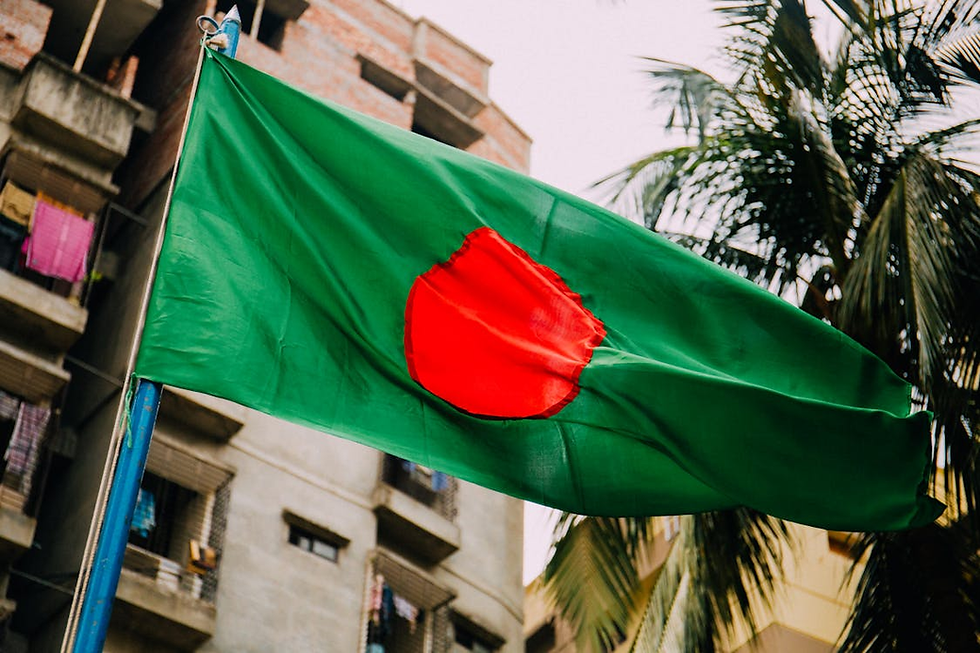A Hard Alliance: Understanding the Recent Saudi-UAE Oil Dispute
- Raunaq Singh Bawa

- Jul 20, 2021
- 3 min read
Updated: Dec 23, 2024
June 2021 has seen oil prices rise to a 2-year high, causing much financial angst for the international community already under a COVID-induced strain, particularly for the developing nations. The present crisis has come about as a result of a diplomatic spat within the OPEC+ (Organisation of Petroleum Exporting Countries), the multinational cartel of some of the largest oil-producing countries in the world, including 13 formal members and 10 additional members (thus signifying the ‘OPEC+’).

The OPEC+ grouping’s members cooperate collectively to align their oil production policies, particularly with regard to the supply and pricing of crude oil to the international market. The present intra-OPEC dispute revolves around Saudi Arabia and UAE.
For context: In April 2020, the OPEC+ countries came to a two-year agreement to cut down on oil supply, in the wake of the coronavirus pandemic and the resultant fall in demand and prices for oil. However, over the coming months, with the re-opening of most major economies around the world, coupled with the kickstarting of widespread immunisation programmes, demand for oil began to shoot up, and thus oil prices rose too. However, the OPEC continued to maintain supply curbs, thus resulting in inflated oil prices. These high prices are likely to hinder the economic recovery of developing nations as they battle the pandemic.
It is in this context that the OPEC Joint Ministerial Monitoring Committee (JMMC) decided upon a plan to a) relax supply curbs, and b) to extend the April 2020 agreement by eight months (thus, the deadline for the same would shift from April 2022 to December 2022). While the UAE expressed no objection to the former, it objected to the latter, demanding that its baseline production be adjusted first.
‘Baseline production’ means the reference point of oil production from which adjustments are made. For example: the present baseline is set at October 2018, at which time the UAE produced 3.16 million oil barrels per day (bpd). Therefore, an oil cut of, say 22% would mean the UAE would be permitted only to produce 78% of its 2018 levels of production.
However, the UAE’s investments in oil production allowed it to increase its production capacity to 3.841 million bpd as of April 2021 - an increase of over 20% from October 2018. In other words, a 2020 baseline would allow the UAE to significantly increase its permitted oil production as compared to a 2018 baseline, which would allow it to derive more profits from the oil trade. Therefore, the UAE is not fundamentally opposed to either relaxing oil curbs or extending the April 2020 agreement, but it refuses to move ahead with the latter unless its demand for an amended baseline is met.
The situation became a deadlock upon Saudi Arabia and Russia’s refusal to accede to the UAE’s demand. While Saudi Arabia is the most influential member of the OPEC, Russia is also a key OPEC ally (coming under the ambit of OPEC+), and is also a significant oil producer. Saudi and Russian objections arise from the apprehensions that if they accede to the UAE’s demands, other members of the OPEC may also raise similar demands in the future. And thus, the OPEC found itself in a deadlock, seemingly intractable. The situation is complicated further, given that Saudi Arabia and UAE are traditionally close allies with aligned strategic interests. Recent events have demonstrated increasing disagreements between both allies, on issues ranging from the Qatar diplomatic crisis to the Yemeni civil war, where both countries have had differences of opinion on how to proceed.
On 14th July, evidence of a thaw in the deadlock began emerging, as reports came in of a possible compromise between the UAE and Saudi Arabia. While the UAE agreed on relaxing the supply curbs, Saudi Arabia agreed to raise UAE’s baseline from 3.16 million bpd to 3.84 million bpd. On 19th July, it was reported that the OPEC+ finally agreed to raise the baselines of the UAE and others, while relaxing the output restrictions. Thus, the cartel will now be releasing more oil supply into the international market, at an estimated increase of 2 million bpd (for reference: the April 2020 agreement initially envisioned cuts of nearly 10 million bpd, and following some relaxations since then, the OPEC+ supply cuts at present stand at an estimated 5.8 million bpd). In the meanwhile, the OPEC+ will also be able to extend the April 2020 agreement up until the end of 2022. It has been reported that Russia emerged as a key mediator in this dispute - hopefully putting an end to the oil prices which had touched a 2.5 year high.

_edited.png)



Comments